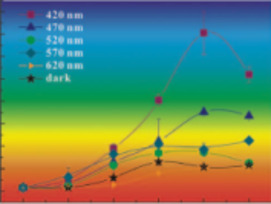Interactions between Semiconducting Minerals and Bacteria under Light
A synergistic reaction pathway has been identified between semiconducting minerals and bacteria. Such reactions sustain electron and energy flow from light to nonphototrophic bacteria via semiconducting minerals, which act as a catalytic shuttle. Understanding this pathway may shed light on a unique ecosystem that potentially carries out phototrophic metabolism without the involvement of phototrophic organisms. Four key natural elements of this system are sunlight, semiconducting minerals, nonphototrophic bacteria, and water. This pathway also suggests a “selfcleansing” mechanism that may exist in nature, whereby both oxidative and reductive degradation of contaminants can occur.
Interactions between Semiconducting Minerals and Bacteria under Light Read More »



